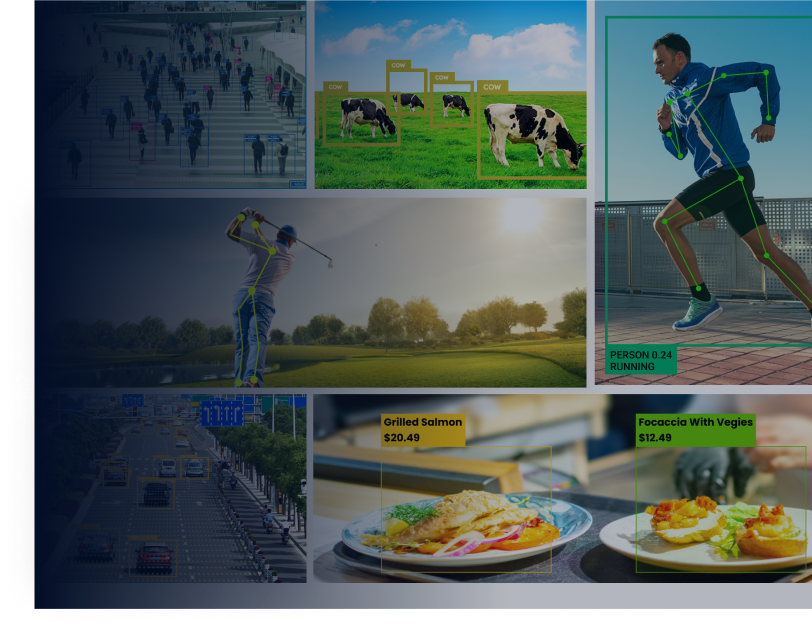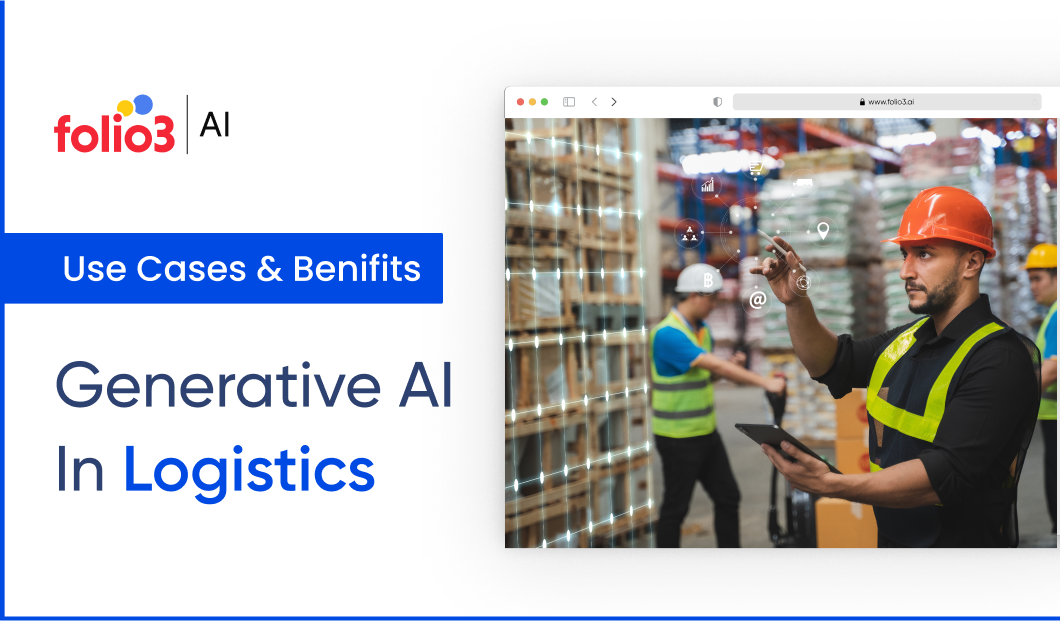Generative AI has recently made significant inroads into the logistics industry, marking a transformative shift in how supply chains are managed globally.
Let’s look at May 2025, logistics companies across the United States and worldwide have started using generative AI for management accuracy and decision-making throughout their operations.
Generative AI creates original content, predictions, or solutions based on data inputs, enabling automation and optimization in complex environments. It helps logistics companies to supervise inventory, forecast demand, and plan routes accordingly.
The logistics sector is highly complex and faces numerous challenges, primarily due to globalization, increased product variations, fragmented distribution channels, and heightened consumer demand for customized solutions. Generative AI matters profoundly in this context because its ability to anticipate disruptions and enhance operational resilience makes it a vital tool for navigating the evolving demands of global logistics.
Below, we have discussed generative AI’s benefits and use cases in logistics and how it handles intricate administrations. So, it’s easy for you to implement generative AI in your logistics industry.
Use Cases of Generative AI in Logistics
1. Dynamic Route Optimization
One of the toughest tasks is functionalizing and managing the routes. Generative AI easily optimizes them by analyzing real-time data such as live traffic, weather conditions, fuel costs, and driver availability. Unlike static routing systems, AI dynamically recalculates routes to avoid delays caused by accidents or congestion, improving delivery times and reducing fuel consumption. It also coordinates multi-vehicle fleets to maximize load efficiency and minimize redundancy, enabling smarter, cost-effective logistics operations.
UPS utilizes its AI-powered system, ORION (On-Road Integrated Optimization and Navigation), to optimize delivery routes in real time. ORION analyzes factors like traffic, weather, and package volume, enabling drivers to reduce fuel consumption and improve delivery times. This system has saved UPS millions of miles and significant operational costs annually.
2. Warehouse Layout Generation & Automation
Generative AI is lucrative in designing and automating warehouse layouts as well. It enhances storage efficiency and synchronizes warehousing and transport. By analyzing inventory flow, product dimensions, order frequency, and seasonal demand patterns, Generative AI can generate optimal floor plans that reduce pickers’ travel time and improve space utilization. It can also simulate different layout scenarios to identify the most effective design before implementation. Also, generative AI supports automation by coordinating with robotic systems for tasks like sorting, packing, and shelving, ensuring faster order fulfillment and fewer manual errors. This leads to a more agile, scalable, and responsive warehousing system.
Amazon has integrated over 750,000 robots into its warehouse operations, including the tactile Vulcan robot. These robots, combined with AI, assist in designing efficient warehouse layouts and automating tasks like sorting and shelving, enhancing storage efficiency, and reducing manual errors.
3. Demand Forecasting and Inventory Management
Generative AI substantially improves demand forecasting. It can evaluate and process vast historical and real-time data, including sales trends, seasonality, promotions, and external factors like weather or economic indicators. This leads to more accurate predictions, reducing both overstock and stockouts. AI-driven inventory management systems are more efficient, providing real-time visibility across locations, automating replenishment by dynamically adjusting reorder points, and optimizing stock levels to free up capital and prevent production delays.
QXO, a building products distributor, has appointed a Chief AI Officer to enhance inventory management and demand forecasting. By leveraging AI, QXO aims to predict customer demand more accurately, optimize stock levels, and streamline procurement processes.
4. Supply Chain Scenario Simulation
Supply chains are unpredictable—one supplier issue or border closure can throw everything off. That’s where Generative AI makes a real difference. It goes beyond historical data to simulate real-time scenarios like supplier shutdowns, port delays, natural disasters, or geopolitical events. Logistics teams can anticipate disruptions and plan ahead by generating hundreds of “what-if” simulations.
This isn’t just forecasting—it’s prescriptive planning powered by intelligent modeling. Teams can identify alternate routes, adjust lead times, and reposition inventory in advance. The result is more intelligent resource allocation, greater agility, and fewer bottlenecks. In short, Generative AI helps build a more resilient and responsive supply chain.
Coca-Cola Andina employs AI to simulate various supply chain scenarios, such as supplier disruptions or geopolitical events. This predictive capability allows the company to develop contingency plans, adapt quickly to market changes, and maintain smooth operations despite volatility.
5. Digital Twin Enhancements
Generative AI takes digital twins—virtual copies of your supply chain—and keeps them updated with real-time data. This lets you monitor operations live, test changes without risk, and see how different scenarios might play out. The result? Faster, smarter decisions and more agile supply chain management.
Boston Consulting Group (BCG) has developed the Value Chain Digital Twin, which uses AI and automation to help companies monitor operations, perform predictive maintenance, and simulate supply chain disruptions. Early adopters have seen up to a 30% improvement in forecast accuracy and significant reductions in delays
6. AI-Generated Customer Communications
Generative AI helps automate customer updates by sending real-time alerts on order status, delivery changes, and issue fixes. This keeps customers in the loop with clear, consistent messages tailored to their needs, boosting trust and satisfaction.
Lowe’s has introduced the Mylow Companion, an AI tool that assists employees in providing customers with real-time information on product availability and inventory. This enhances customer service by delivering timely and accurate responses
7. Document Automation
Generative AI automates document tasks like invoices, purchase orders, customs forms, and compliance paperwork. It pulls accurate info from messy data, cuts errors, speeds up processes, and keeps you compliant, making admin work across the supply chain much smoother.
Flexport, a freight forwarding company, uses AI to automate document processing tasks like invoice generation and customs paperwork. This automation reduces manual errors, speeds up workflows, and ensures regulatory compliance across the supply chain.
Benefits of Using Generative AI in Logistics
Generative AI is a transformative tool for logistics. Through Gen AI integration, it drives efficiency, reduces costs, enhances customer service, and enables agile responses to an increasingly complex global market. Read below to see what benefits it offers.
1. Faster, Smarter Decisions with Real-Time Insights
Quick decisions can make or break efficiency in today’s fast-moving logistics landscape. Generative AI processes huge volumes of real-time and historical data, like traffic conditions, weather disruptions, demand shifts, and carrier performance. Turning this data into clear, predictive insights helps logistics managers respond faster to changing conditions on the ground. Whether it’s rerouting a shipment during a storm or adjusting fleet schedules based on demand spikes, AI ensures your operations stay ahead of the curve.
2. Cost Savings Through Dynamic Optimization
Generative AI directly impacts the bottom line. By optimizing delivery routes in real time and forecasting demand with high accuracy, it reduces fuel usage, driver overtime, and wear on vehicles. In warehouses, it automates inventory planning, avoiding stockouts and overstocking. It even helps procurement teams predict replenishment needs and allocate resources where they’re most needed. These combined efficiencies drive down operational costs across transportation, warehousing, and procurement.
3. Better Customer Experience, Built In
Customer expectations are higher than ever. Generative AI enhances satisfaction by delivering accurate ETAs, flagging potential delays early, and personalizing communication. Whether it’s B2B clients tracking bulk shipments or end-customers waiting for last-mile delivery, AI keeps everyone informed with proactive, tailored updates. This transparency builds trust and keeps your service levels consistently high, even during disruptions.
4. Resilience Against Disruptions
From supplier shutdowns to geopolitical tensions and extreme weather, supply chains face constant risks. Generative AI strengthens your ability to adapt. Simulating multiple “what-if” scenarios helps you identify vulnerabilities and prepare backup plans. When disruptions hit, your team can pivot quickly, rerouting shipments, switching suppliers, or rebalancing inventory across regions. The result is a more resilient supply chain that continues to perform, even in unpredictable environments.
Conclusion – Generative AI for Seamless Industrial Process Optimization
Generative AI is rapidly becoming the new standard in logistics, handling all operational requirements and comprehending diverse data sets, generating optimized solutions, and simulating complex supply chain scenarios. It addresses the growing challenges of global logistics, from fluctuating demand and delivery expectations to cost pressures and sustainability goals.
As logistics companies increasingly integrate generative AI into their workflows, they gain the capacity to make real-time, data-driven decisions that reduce costs, improve service levels, and anticipate disruptions before they occur.
Ultimately, the need for generative AI integration is clear: it equips logistics providers to thrive in an environment of complexity and rapid change, ensuring they remain competitive and responsive in a demanding global market.

Manahil Samuel holds a Bachelor’s in Computer Science and has worked on artificial intelligence and computer vision She skillfully combines her technical expertise with digital marketing strategies, utilizing AI-driven insights for precise and impactful content. Her work embodies a distinctive fusion of technology and storytelling, exemplifying her keen grasp of contemporary AI market standards.









